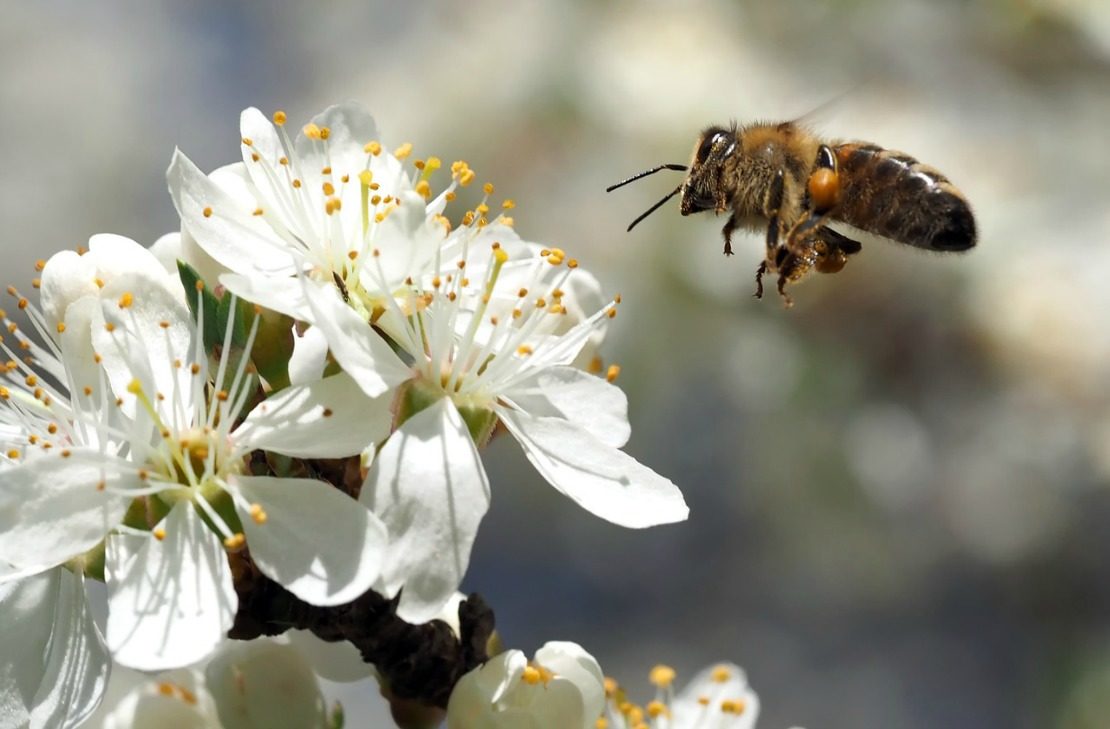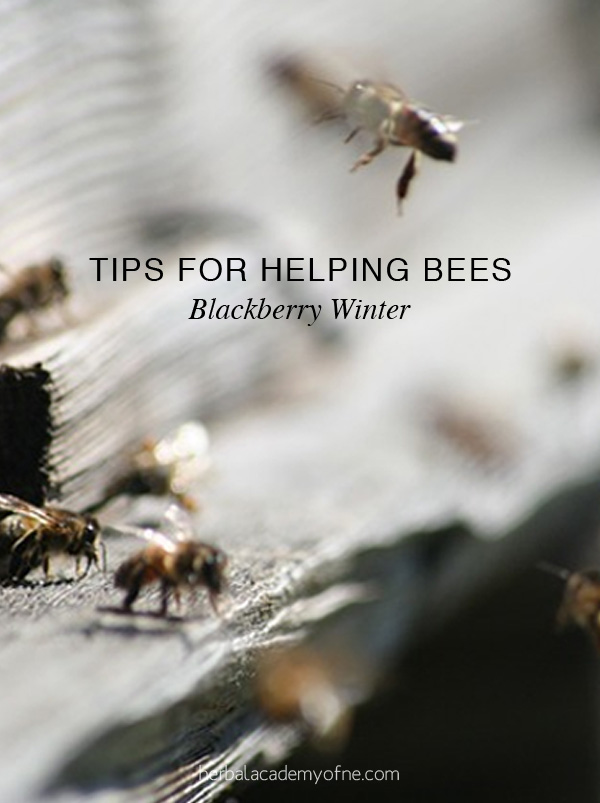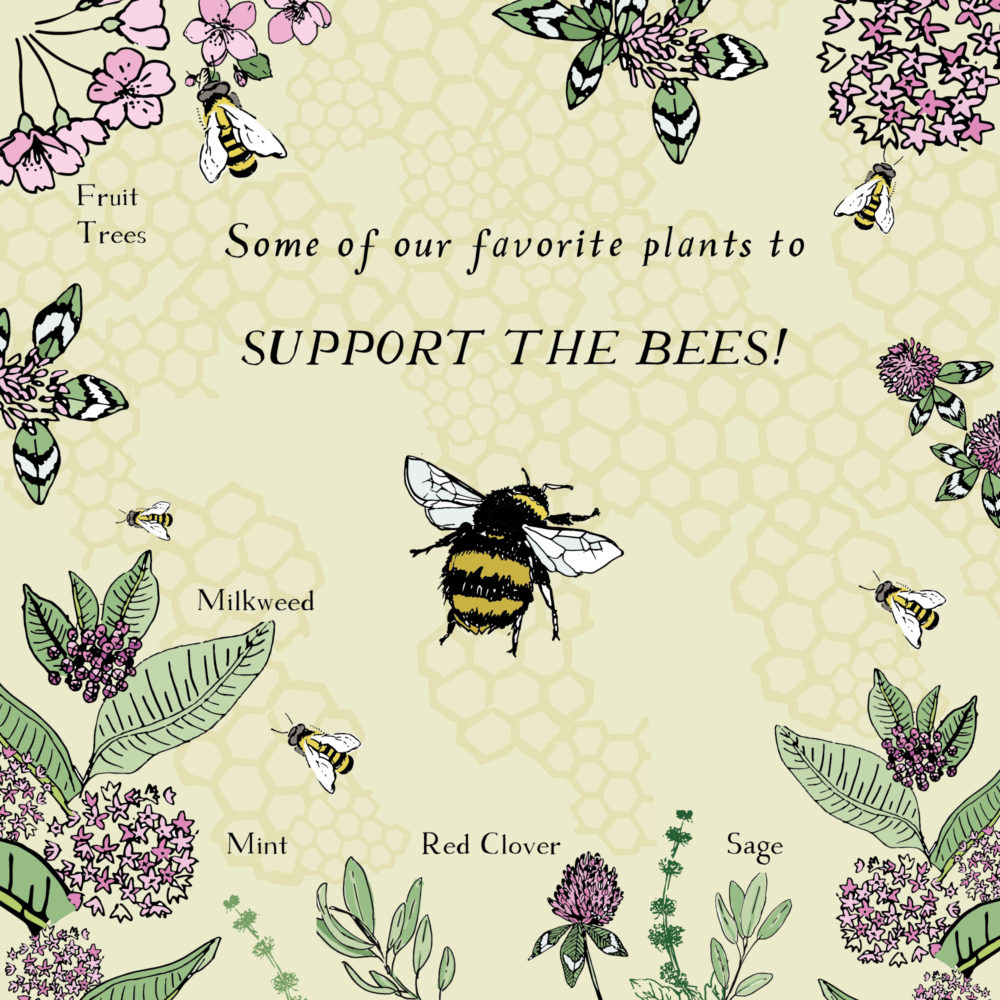
Blackberry Winter – Tips for Helping Bees
“Blackberry Winter” is a hauntingly beautiful song mourning a love affair that ends coldly and without warning. For gardeners eager to embrace the onset of the spring growing season, a sudden cold snap (or a blackberry winter) can damage tender blooms of flowering herbs, fruits, and other spring plants.

Blackberry winter comes without warning
Just when you think that spring is here to stay
And you wake up on a cold rainy morning
And wonder what on earth became of May– lyrics by Alec Wilder and Loonis McGlonghlin
Dogwood, locust, and redbud winters are all terms synonymous with these “little winters” or “seasonal hiccups,” named for the indigenous species native to a particular region. Old-timers would often refer to the Lindsey-Woolsy britches winter, the coarse fabric predominately used in the construction of woolen underwear. It was said that one could safely plant the spring garden once the long johns could be packed away for another year. And indeed, the ritual stowing away of winter garb is cause for celebration here in the central plains.
Blackberry Winter and the Honeybee
March can be a harsh time for Apis mellifera, the honeybee. Honey stores may be depleted or nearly so, and the vacillating temperatures may interrupt or delay the pattern of many flowering trees and herbs. As the daylight hours begin to lengthen, the queen ratchets up her egg laying activity, forcing workers to forage for nectar further afield in order to meet the demands of this rapidly growing population. Dependent on the region and weather conditions, natural food choices may be limited. Due diligence from the beekeeper is required in the form of a 1:1 simple syrup solution to prevent starvation of the hive during this period.
As April approaches, the scents of early blooming trees such as sassafras, redbud and crabapple lure the bees and other pollinators out in a frenzy of foraging activity. For me there is nothing so pleasant as to stand under the snowy blossoms of the crabapple tree vibrating with the activity of honeybees working the blooms.

Many fruit bearing trees such as peaches, pears, and blackberry vines require a chill time over winter in order properly set blooms. The chill time equates to the number of hours a fruit bearing tree or bush sustains temperatures between 32 to 40 degrees throughout the winter. Old-time gardeners would use the appearance of blooms on their blackberry vines to predict these seasonal changes or “blackberry winters” before planting less cold tolerant vegetables such as tomatoes, beans, and cucumbers.
Flowering herbs such as lavender, thyme, mint, borage, bee balm, marjoram, and oregano are bee magnets and make great choices for the spring garden but should be protected from late frost or heavy freeze.

Tips for Helping Bees
It’s important when planting flowers and herbs in your spring garden to take seasonal fluctuations into consideration. A few tips to ensure a continuous nectar flow transition throughout the spring and summer include:
- Choose plants native to your region. Check your hardiness zones and choose accordingly.
- Be aware that the blooming period for some trees and plants may vary from region to region. For example the chaste tree blooms in the June in the south and not until August in the Pacific northwest.
- When planting flowers to attract pollinators, vary the shapes and colors. Bees prefer yellow and blue tubular flowers whereas birds are attracted to red. Bees see into the ultraviolet following the lines of nectar.
- Plant flowers in groupings versus straight lines. Bees will often skip over the single bloom in favor of a clump of flowers.
- Cold weather bulbs such as crocuses and daffodils should be planted in groupings with staggered blooming plants such as forsythia and azaleas. Not only does this provide some protection to less heat tolerant flowers but also makes an attractive transition.
- Incorporate late summer bloomers into your garden plan like oleander, butterfly bushes and hydrangeas that are heat tolerant and pollinator friendly.
- And remember to provide a water source for pollinators. A shallow bowl with natural perches of twigs or rocks is best for bees.
Remember no matter how much planning and forethought you put into your garden plan, Mother Nature may not always corporate. So, be flexible, patient, and resilient. We are the caretakers of this planet we call home, one we share with all the pollinators who enrich our lives in so many ways. So go out there, dig in the dirt, and feed a bee!
Rebecca O’Bea is a beekeeper and avid gardener from Kansas. A budding herbalist and student at the Academy, she can be found most days knee-deep in compost and blogging about her daily life at The Bee Queen.
RESOURCES
http://www.raintreenursery.com/choosingplants.html
http://www.motherearthliving.com/gardening/attract-pollinators-to-your-garden







